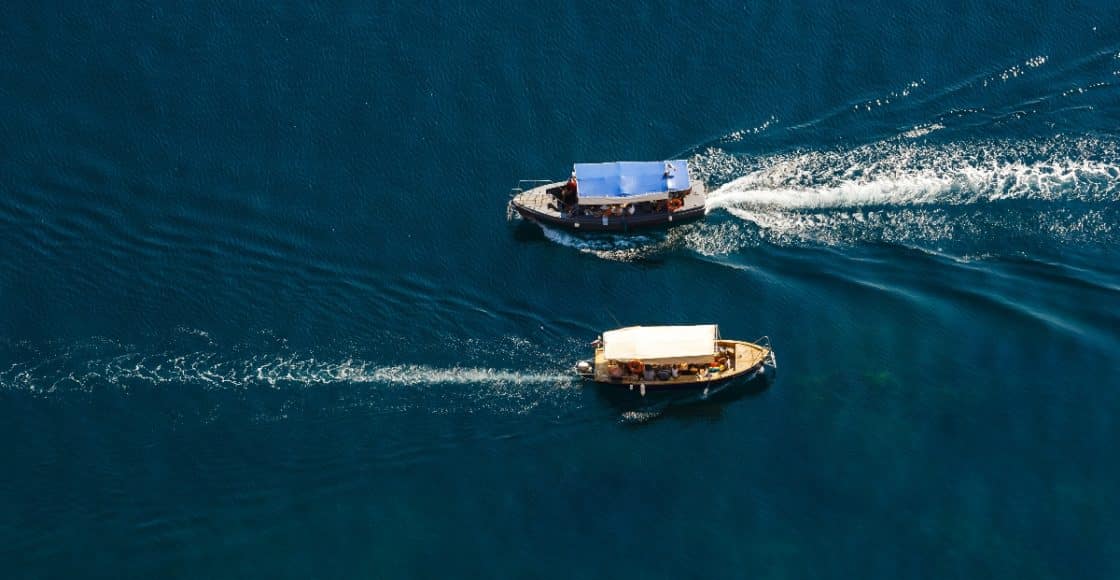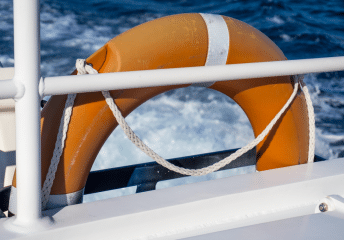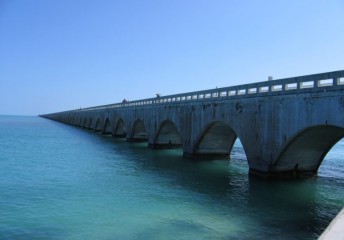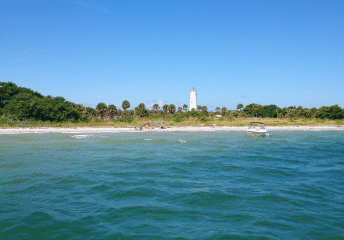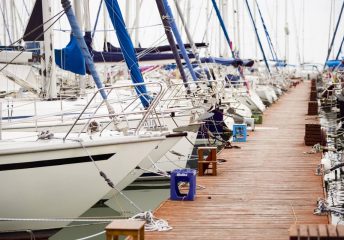Boating Right of Way Rules: Understanding Meeting, Crossing, & Overtaking
Last Updated on October 12, 2023 by Boatsetter Team
Memorize the basics when it comes to whether the Rules of the Road favor your boat over another during encounters on the waterways.
Think back to when you took your automobile driver’s test. You likely took a course first, to learn proper steering and braking, plus what road signs and painted lines mean. In boating, unfortunately there are no lines on channels or bays—and no stop signs or traffic signals, either.
But, there are certain rules that everyone not only needs to follow by law, but also easily can commit to memory. Boating right of way rules ultimately serve the same purpose as roadway rules: They keep everyone safe. Read this post all the way through to learn the right of way rules in boating.
Post summary:
- Boating definitions to understand the right of way rules
- Boating scenario to know
- More opportunities to learn about boating
Find unique boat rentals & on-water experiences near you
Boating definitions to understand the right of way rules
In every encounter on the water, one boat is the give-way vessel, while another is the stand-on vessel. The give-way vessel must keep out of the way of the other vessel.
Simultaneously, the give-way vessel needs to take action early enough, substantially enough, and safely enough so that the other vessel’s operator notices it. The stand-on vessel, meanwhile, needs to maintain both course and speed until the give-way vessel passes you, or the give-way vessel’s actions by themselves won’t prevent a collision.
Boating scenarios to keep in mind
Next, the majority of scenarios in which give-way and stand-on vessels encounter each other are meetings, crossings, and overtakings. Here’s what these mean and what the boating right of way rules dictate:
Meetings
A meeting is when two boats are on a course to encounter each other head-on or close enough to it. Here, the boating right of way rules say that both boats are the give-way vessels. Therefore, you need to pass each other on your port sides by maneuvering to starboard.
Crossings
A crossing occurs when two boats are about to cross paths perpendicular to each other. If the other boat is to starboard you, you’re the give-way vessel. So, turn your boat to starboard, to keep that boat to port and both of you safely on your respective ways. (A helpful tip if you can’t remember crossings from meetings: When in doubt, always assume it’s a head-on meeting, and turn to starboard.)
Overtakings
An overtaking is exactly what it sounds like, one boat passing another by coming up from behind it. According to the boating right of way rules, the overtaking vessel is the give-way vessel, no matter what.
This may seem confusing if you’ve read a few boater’s ed articles and learned how some vessels—sailboats and rowboats, for example—have priority over powerboats because they’re less maneuverable. With overtakings, it doesn’t matter which vessel is more or less maneuverable. It only matters which is overtaking and subsequently which is being overtaken.
Even if you understand the boating right of way rules, other boaters you encounter might not. For example, they could be pretty inexperienced behind the wheel and not realize the rules exist. Or, they might know about them but ill-advisedly ignore them. Keep a close watch on their maneuvers—or lack thereof—and be prepared to act accordingly. Even if technically, you’re supposed to maintain course and speed, you actually may be safer yielding.
For an even deeper understanding of the boating right of way rules, visit the U.S. Coast Guard webpage for Navigation Rules.
Want to know more about boating?
- How to Read a Nautical Chart
- 3 Boating Tips on Navigating Rough Waters
- How to Rent a Boat
- Boat Rental Services 101: What is Boat Sharing?
- Docking a Boat: 5 Easy Steps for Beginners
About us
Boatsetter is the go-to app for boat rentals and on-water experiences. Whatever the adventure, we’ve got a boat for that—Set sail, start the party, go yachting, make your trophy catch, and hone your watersports skills! Download the Boatsetter app (App Store | Google Play). Make sure to follow @boatsetter on Instagram, and tag us in all your boat day pictures for the chance to be featured.
Rent. List. Share—Only at Boatsetter

A journalist with more than 30 years’ experience, Diane M. Byrne is the owner
of MegayachtNews.com, a daily website educating American superyacht owners, buyers, and
their circles of influence about the leading builders, designers, cruising destinations, and more.
She founded the website in 2007 as the first, and still the only, American-focused online media
outlet exclusively covering this market. It features all-original content, for real stories of real
interest.
Diane is additionally one of the most-sought-after journalists for expert editorial coverage and
commentary about not only superyachts, but also general boating and yachting. Her byline
appears in Boatsetter.com, DiscoverBoating.com, and the magazines Luxury Guide, Ocean,
Yachting, and Yachts International.
Additionally, Diane is the Chair of the U.S. Superyacht Association, having been on the Board of
Directors since 2015. Outside of yachting, she’s a trustee of Sempre Avanti, a non-profit
resource supporting Italian and Italian-American individuals, businesses, and organizations in the
United States and Italy.
